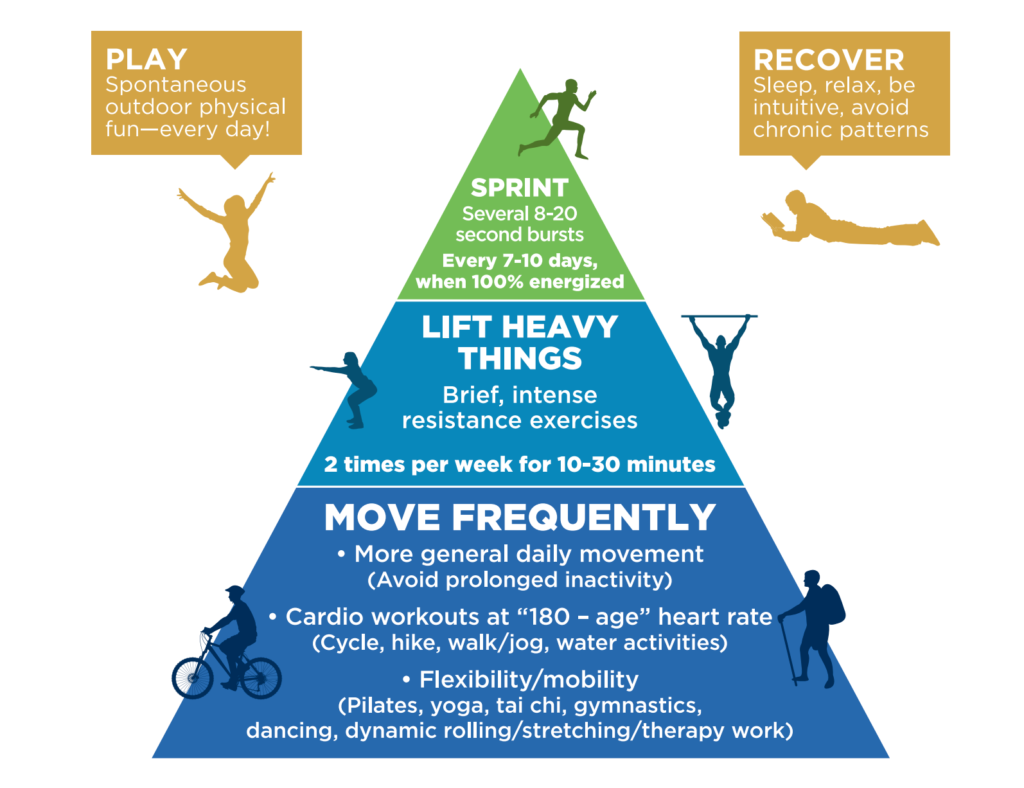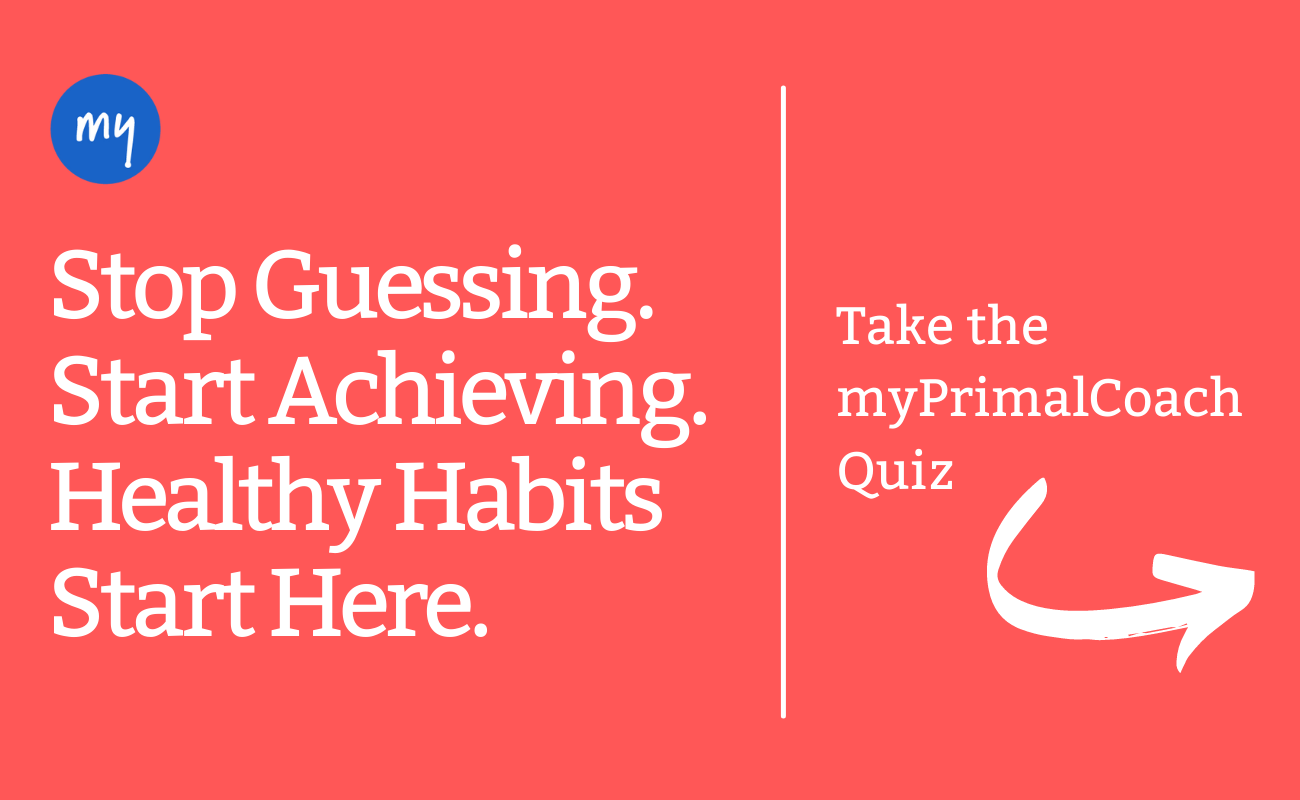It feels good to go hard and go long…on occasion. But the sustained high-intensity aerobic sessions that are the norm in today’s “go hard or go home” fitness culture do more harm than good.
This should be happy news to all but the hardcore fitness enthusiast who’s addicted to chronic cardio—a 45 minute- to hour-long spin session, run, or aerobics class performed at continuous intensity several days a week. There’s a far more healthy, fun, and approachable way to lose weight, burn fat, and build and preserve lean muscle. We’ll show you how, but first, let’s get clear on just what we mean by chronic cardio.

What Is Chronic Cardio?
Chronic cardio is long-duration, repetitive cardiovascular exercise that exceeds the aerobic threshold (80-85% of your maximum heart rate). Your aerobic threshold is personal, and dependent on your age, health status, and fitness level. It’s between a moderate- and high-intensity effort that doesn’t let up. It’s not such an all-out effort that you wouldn’t be able to sustain it for 5-10 miles, but it is vigorous enough that you’re in the sugar-burning zone and feeling it.
It’s “the black hole” that exercise scientist Stephen Seiler coined—that zone where it’s not so painfully intense that you feel like you’re going to collapse, but it’s also not so easy that you feel like you’re barely breaking a sweat. It’s a brisk 30-minute cycle or run. It’s pretty enjoyable. And it’s easy to become addicted.
That’s the “chronic” component of chronic cardio. An occasional fast-paced 10-mile run doesn’t qualify. But training 3-5 days a week for a marathon every month does. And beating your miles and RPMs at spin class 5 days a week does, too.
It doesn’t sound too bad, especially if you’re competitive by nature. Who doesn’t like to set new records? But your body would disagree. When we enter the black hole, we put near-constant stress on the body. Not the kind that gives us the strength and endurance gains we’re after—the kind that leaves us fatigued and our systems weakened.
Check in: Do you dread your cardio workout? Does it leave you feeling mentally exhausted and physically depleted? Is it torture throughout? If you answered “yes” to any of these questions, you may be in chronic cardio territory.
The Dangers of Chronic Cardio
When you exercise above your aerobic threshold, your body kicks into sugar-burning mode because your muscles are screaming for glucose. And it takes eating a ton of carbohydrates to supply the load. Your muscles and liver can only hold 500-600 grams of glycogen (stored glucose) at a time. To shore up those stores before the next workout, you’d have to eat 600 more grams of carbs each day, which is way more glucose and insulin than your body needs. Get into the chronic cardio habit, and this sugar-eating, sugar-burning cycle can cause your body to start over-producing insulin, a condition called hyperinsulinemia.
Continuous exercise at high levels also stimulates the release of the stress hormone cortisol and the production of free radicals by a factor of 10 to 20 times the normal amount. This leaves you vulnerable to injury and infection, and can reduce lean muscle mass and bone density, all the while coaxing your body to store more fat. And that’s just the beginning.
Inflammation That Doesn’t Quit
When it comes to building endurance or strength, oxidative stress is what we’re after. Put stress on the body, break it down a bit, and it builds back stronger. The next time we encounter the stressor, we’re better able to handle it. It’s the basics of exercise physiology.
But if we don’t let up, and we add stressor on top of stressor without rest and recovery, systemic inflammation takes over and starts damaging healthy tissues, cells, and organs. It’s one of the root causes of many diseases, including heart disease, cancer, obesity, and type 2 diabetes.
Heart Troubles on the Horizon
The heart is a sensitive organ. It responds to the slightest change in blood chemistry (like an increase in cortisol, insulin, or lactic acid) by beating faster or slower, trying to keep up with your organs’ and muscles’ demand for more oxygen.
When we put this pressure on the heart over and over again for extended amounts of time, the walls of the heart can start to hypertrophy (enlarge and thicken). This can put you at increased risk for cardiac arrhythmias, such as atrial fibrillations, which can, in turn, increase your risk for stroke and cognitive decline. Studies show that endurance athletes, including runners, are at a greater risk for atrial fibrillations. Explanations for this propensity toward cardiotoxicity include increased fibrosis (scar tissue formation), myocardial injury, and excessive inflammation.
Chronic cardio is also linked to atherosclerosis, or hardening of the arteries. A study showed that marathoners had more calcified plaque in their coronary arteries, and more recent studies suggest that the most active endurance athletes have high arterial plaque levels.
That’s not to say endurance training is off the table. It’s just about adjusting the training method—focusing on the occasional short bursts of “life-or-death” high-intensity exercises and adding in resistance training, low-level cardio, and lots of play, rest, and recovery in between.
Taking the Chronic Out of Cardio
When you take the chronic out of cardio, you’ll burn more fat and improve your stamina and endurance. And you’ll do it without taxing your immune system or your adrenals.
Bonus: you’ll find that you don’t crave as many carbs, which will further contribute to weight loss.
Here’s how it’s done.
- Move Frequently. Go on long brisk walks. Enjoy a lengthy hike on the weekend. Jog with a buddy at an easy pace. Move as much as possible during the day and get those steps in!
- Lift Heavy Things. Engage in resistance training two times a week for 10-30 minutes. The Primal Essential Movements—push-ups, pull-ups, squats, and planks—work the major muscle groups and are accessible to all fitness levels.
- Sprint. Increase your oxygen uptake (VO2 max) with high-intensity intervals once or twice a week, whether via a formal HITT class or brief (20-40 seconds), explosive all-out sprints.
Just follow the Primal Blueprint Fitness Pyramid.

In addition to supplementing your aerobic activities with strength training and high-intensity intervals, including mobility and flexibility classes, get massages, and play and have fun. Don’t forget to make time for sleep and relaxation. That’s where your body rejuvenates and rebuilds.
Let’s Talk Heart Rate
To stay out of the black hole, you must keep your heart rate within your aerobic threshold during your slow and steady cardio sessions. The easiest way to stay on track is to use a heart rate monitor and make sure you don’t go above the “180-age” heart rate. If you are an endurance athlete, we strongly recommend you use an HR strap to keep you honest.
Check in: You can also gauge your heart rate with the “talk test.” Have a conversation or sing a song while exercising. If you’re having trouble talking, then check that heart rate monitor. You are likely out of the fat-burning zone and over your aerobic threshold.
Wait for It
Start moving more (and more slowly) and you’ll stop depending on carbs. You’ll be able to go longer without eating, and perhaps even be open to trying intermittent fasting or going keto. You’ll make room for resistance training, and you’re likely to go down some belt notches, too. In fact, one study showed that people who traded in 20 minutes of cardio for 20 minutes of weight training had the greatest reduction in waist circumference.
Be consistent and have patience. Good stuff is happening, even when you can’t see it. So concentrate on how you feel, and stick with it!

